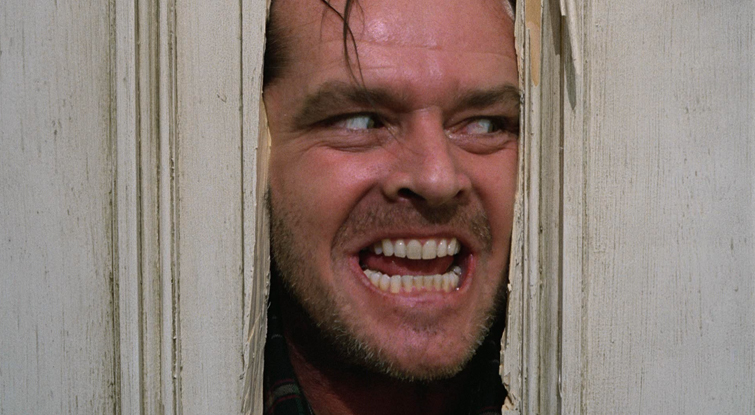Research on camera shots
Today in class we have look at different camara shots.














Has the freedom of a handheld shot, but its stabilisation device smoothes
A single shot which moves away from a particular subject. When done very quickly it can displace the audience, but it can also be used to show the wider picture or context of an image.
CAMERA SHOTS
Camara angles and movements combine to create a secuence of images, just as words, word order and punctationcombineto to make the meaning of a sentence. Yu need a straightfordward set of key terms to described them.
Extreme wide shot
the view is so far fron the sugect that isn`t even visible.
Often used as an stablishing shot.

Very wide shot
The subjet is visible (barely), but the emphasis still on placing
him his enviroment.

Wide shot
The subject up the full frame, or at least a much as
comfortably possible.

Mid shot
Shows some part of the subject in more detail while still giving
an impression of the whole subject.

Medium close shot
half way between a mid shot an close up.

Close up
A certain feature or part of the subject takes up the whole
frame.

Extreme Close up
The ECU gets right in and shows extreme detail.

Cut in
shows some (other9 part of the subject in detail.

Cutaway
A shot of something other than the subject.

Two shot
a shot of two people, farmed similar to a mid shot.

Over the shoulder shot
Looking from behind a person at the subcject.

Point of view shot
Shows a vew from the subject`s perspective.

Weather shot
The subject is the weather. Can be used for other purposes, e.g.
background for graphics.

Establishing shot
Usually an extreme long or long shot offered at the beginning of a scene or sequenece providing the viewer with the context of the subsequent closer.

CAMERA MOVEMENTS
Arc
An arc ia a camera move around the subject,
somewhat like a tracking shot.
In mathematics, an arc is a segment of the circunference of a
circle. A camera arc is similar - the camera moves in a rough
semi-circle around the subject.
Crab
The term crabbing shot is a less-common version of tracking,
trucking and/or dollying. These terms are more less
interchangeable, althoug dollying tends to mean in-and-out
movements whereas the others tend to mean side-toside
movement at a constant distance from the action.
Dolly
A dolly is a cart which travels along tracks. The camera is mounted on the dolly
and records the shot as it moves. Dolly shots have a number of applications
and can provide very dramatic footage.
Dolly zoom
The dolly zoom is a peculiar camera technique that aims to unsettle the viewer by undermining their normal visual perception. Achieved by zooming in whilst dollying out, and vice versa, the dolly zoom allows the subject to remain the same size in the frame whilst the background changes in unusual ways. For example, the background may suddenly grow in size and detail and overwhelm the foreground. Humans judge the relative size of objects by using size and perspective cues. Therefore, having the perspective change without a change in the subject’s size creates an effect that is atypical of what humans perceive.
Follow
The Follow shot is fairly self-esplanatory. it simply means that
the camera follows the subject or action. The following distance
is usually kept more or less constant.
Pedestal
A pedestal shot means moving the camera vertically with respect
to the subject. This is often referred to as "pedding" the camera
up or down.
Pan
A pan is a horizontal camera movement in wich the camera
moves left and right about a central axis. This is a swivelling
movement, i.e. mounted in a fixed location on a tripod or
shourder, rather than a dolly-like movement in wich the entire
mounting system moves.
Tilt
tilt is a vertical camera movement in wich the camera points
up or down from stationary location. For example, if you
mount a camera on your shoulders and nod it up and down, you
are tilting the camera.
Tracking
It is like dolly movent, the only difference is that instead of moving towards or
away from the subject, it moves sideways, parallel to an object.
away from the subject, it moves sideways, parallel to an object.
Zoom
The camera remains at a constant position, but the lens
magnify or minimize the size of the subject.
magnify or minimize the size of the subject.
Crane
These shots are similar to dolly shots, although it moves left, right, centre, up, down, diagonally etc. all these movements are made with a crane, sustaining the camera.Hand-held
Here the camera is held by humans. it brings the audience to
see as if they were inside the movie, witnessing an event that takes place.
Steadicam
Has the freedom of a handheld shot, but its stabilisation device smoothes
out the bumpiness of the hand held shot. Can be used for point of view shots.
Reverse-zoom
A single shot which moves away from a particular subject. When done very quickly it can displace the audience, but it can also be used to show the wider picture or context of an image.
Comentarios
Publicar un comentario